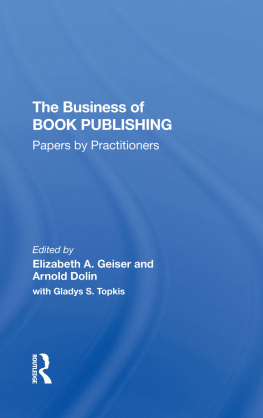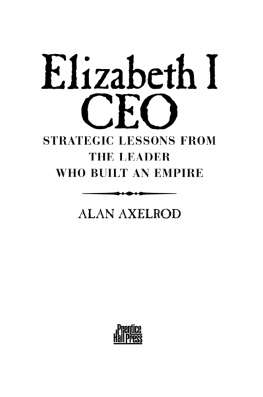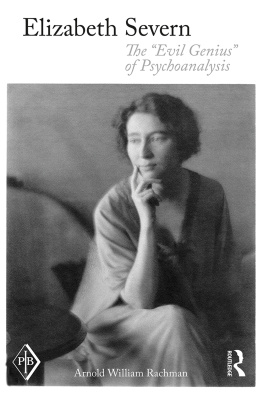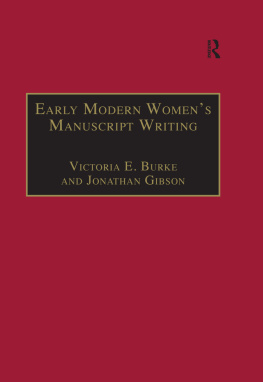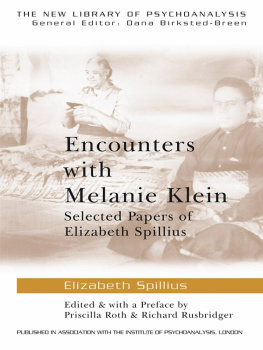The Business of BOOK PUBLISHING
The Business of Book Publishing
Papers by Practitioners
edited by Elizabeth A. Geiser and Arnold Dolin, with Gladys S. Topkis
First published 1985 by Westview Press, Inc.
Published 2019 by Routledge
52 Vanderbilt Avenue, New York, NY 10017
2 Park Square, Milton Park, Abingdon, Oxon OX14 4RN
Routledge is an imprint of the Taylor & Francis Group, an informa business
Copyright 1985 Taylor & Francis
All rights reserved. No part of this book may be reprinted or reproduced or utilised in any form or by any electronic, mechanical, or other means, now known or hereafter invented, including photocopying and recording, or in any information storage or retrieval system, without permission in writing from the publishers.
Notice:
Product or corporate names may be trademarks or registered trademarks, and are used only for identification and explanation without intent to infringe.
Library of Congress Cataloging in Publication Data
Main entry under title:
The Business of book publishing.
Bibliography: p.
Includes index.
1. Publishers and publishing. 2. Book industries and trade. I. Geiser, Elizabeth A. II. Dolin, Arnold. III. Topkis, Gladys S.
Z278.B96 1984 070.5 84-13230
ISBN 13:978-0-367-29048-1 (hbk)
Contents
, SAMUEL S. VAUGHAN
, CHANDLER B. GRANNIS
, HUGH RAWSON and ARNOLD DOLIN
, ELISABETH SIFTON
, GLADYS S. TOPKIS
, ELAINE MARKSON
, JAMES FOX and LINDA K. RAWSON
, DOUGLAS KUBACH
, CAROLE SINCLAIR
, ESTHER MARGOLIS
, ALLAN LANG
, PEARL BOWMAN and NANCY ESSIG
, MILDRED MARMUR
, RICHARD H. NOYES
, ELIOT LEONARD
, DORIS BASS
, FRANCIS HOWELL
, SANDRA K. PAUL
, JAMES C. GIBLIN
, WILLIAM C. HALPIN, with the assistance of HERBERT J. ADDISON
, LOZELLE DELUZ
, FREDERICK A. PRAEGER
, OSCAR DYSTEL
, ANDREW H. NEILLY, JR.
, ARTHUR J. ROSENTHAL
, DEDRIA BRYFONSKI
, MARGARET KNOX GOGGIN
, ELIZABETH A. GEISER
, LOGAN and ANN PELLER
, ELIZABETH A. GEISER
When the first University of Denver Publishing Institute came to a close in August 1976, all of us involved in its launching knew that we had a real success on our hands. And we knew it was due in great measure to an outstanding faculty of more than forty top publishing executives who had come to Denver during those four weeks to teach our students. How regrettable, it seemed, that their knowledge and expertise were available only to the eighty students handpicked for that first class. Fred Praeger, publisher of Westview Press, suggested a solution. "Do a book," he invited, "and let Westview publish the curriculum for others to share."
I loved the idea, but demurred, asking for time to refine and develop what was then a neophyte program. Three years later the Publishing Institute was well established both here and abroad, and I set forth on a task that was to last for four years. By late January 1980 I had outlined the book, identified topics to be covered, invited contributors to participate, and sent guidelines to all. Then I sat backexpectant and (as it turned out) naiveto await the flood of manuscripts scheduled for submission that spring.
It turned out to be a mighty long spring, with the last of the missing pieces not completed until the end of 1983. I knew that I had invited the best and the most experienced to contribute, but what I had failed to realize was that they were also the busiest.
As chapters arrived, they were edited, returned for revision, and frequently edited and revised again. As you well know if you are already in publishing, the writing and editing process usually takes longer than anticipatedand the result often falls short of the perfection the author and editor are seeking. Our goal was the definitive work on the business of book publishing, and although this collection may have some gaps and imbalances, it is clear that it also provides a lot of valuable information on most of the phases and functions of the publishing process. From the very beginning this has been a labor of love on the part of many people. We hope you will benefit from what they have to share with you and that you will agree with our decision to make it available without further delay.
Many of my friends in publishing have been generous with their help and advice. I would not have undertaken this project without the commitment of help from Arnold Dolin of New American Library, one of publishing's most gifted editors. He has brought his remarkable skills to work on most of the chapters in this book, and when his work load bogged him down, Gladys Topkis of Yale University Press stepped in and did an outstanding job of honing and sharpening a number of the contributions. Without the hard work and help of these two good friends and colleagues, our book would not have reached this stage in its publication process, and I am deeply grateful for their participation. I would also like to thank Samuel Vaughan of Doubleday, who reviewed and critiqued the general plan and first outline; Martin Levin of the Times Mirror Company, who read the entire manuscript and offered invaluable guidance; and the late Curtis Benjamin, who reviewed and commented upon many of the chapters. And a special note of gratitude to my friends at Westview Press and especially to Lynne Rienner, who showed patience beyond the call of duty and supplied encouragement and moral support at all the right and crucial moments.
To all these friendsboth named and unnamedmy warmest thanks.
Elizabeth . Geiser
The Business of BOOK PUBLISHING
Chapter One
The State of the Heart
SAMUEL S. VAUGHAN
Toward Definition
American book publishing: What is, in the fashionable phrase, the state of the art?
Well, to start with, it's not an art, it's a business. That isas this book's title proposesthe first fact to face, Then we can move more happily to a second. If at base publishing is a business, at its best it becomes a vocation.
Strictly speaking, publishing is neither an art nor a profession. Though artists and professionals find careers in publishing (lawyers, accountants, M.B.A.'s, art directors, and so on), ours is only accidentally a profession and sporadically an art. It makes no formal professional demands for study, internship, admission by examination, or expulsion for violation. The best publishers are ethical and have standards, but the business has no fixed rules or ethical codes of conduct and you can dismay but not be disbarred by your peers.
To be an ounce more generous, there can be art in publishing as there is in carpentry or diplomacy or psychiatry (three fields not unrelated to ours). Nevertheless, publishing, though it derives in part from art, can be at times as mundane and repetitive as other forms of labor. It is no more an art than such kindred activities as librarianship or bookselling and should not be confused with, say, either writing or printing, each of which can be an art or craft or simply workaday.
No, we profess no profession, claim no art. Our curious tribal customs and actions are to an extent, and increasingly, businesslikethough we are far from all business.


